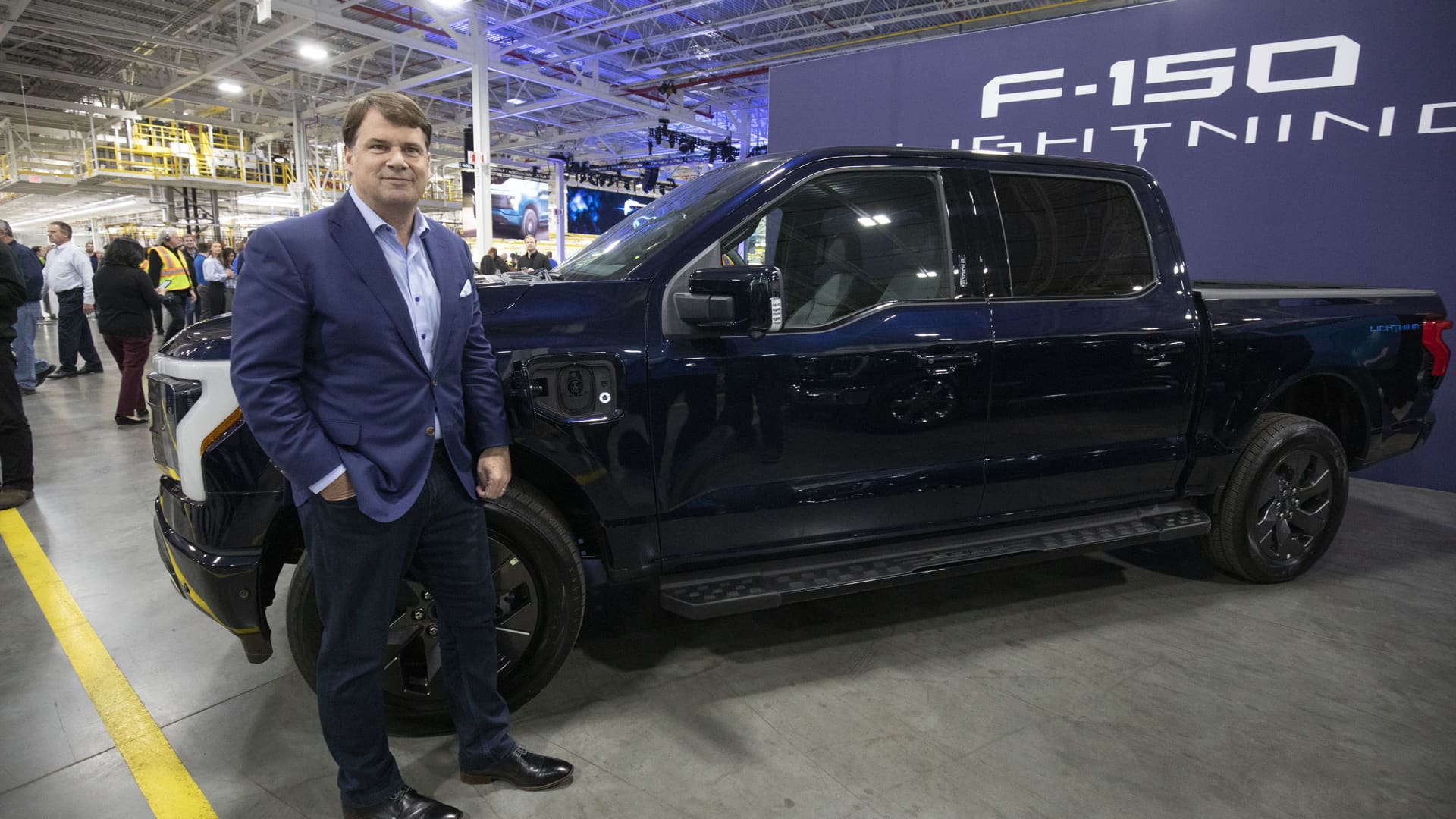Ford Motor said Thursday pushed back production targets for its electric vehicles, citing slower-than-expected adoption.
Ford now expects to be building EVs at a rate of 600,000 per year sometime during 2024, a delay from earlier estimates that it would reach that level by the end of 2023. The automaker had previously targeted a rate of more than 2 million per year by the end of 2026, but now says it doesn’t know when it’ll achieve that volume.
related investing news
“The transition to EVs is happening, it just may take a little longer,” CFO John Lawler said following the automaker’s second-quarter earnings results.
“It will be a little slower than the industry expected,” he said.
But Lawler emphasized that Ford’s EV spending plan and its profitability goal for its electric vehicle unit haven’t changed. He said that Ford is still targeting an 8% operating margin for its EV business, and that it isn’t planning to reduce its capital spending on the vehicles.
“We’re going to find a way to get to that 8%,” Lawler said.
In a statement, CEO Jim Farley argued that the more gradual ramp-up of electric vehicle production could be a boon for Ford.
“The near-term pace of EV adoption will be a little slower than expected, which is going to benefit early movers like Ford,” Farley said, noting the success of Ford’s first generation F-150 Lightning and Mustang Mach-E EVs. “While others are trying to catch up, we have clean-sheet, next-generation products in advanced development that will blow people away.”
While Ford overall was solidly profitable during the second quarter, the Model e unit posted an operating loss of $1.8 billion.


